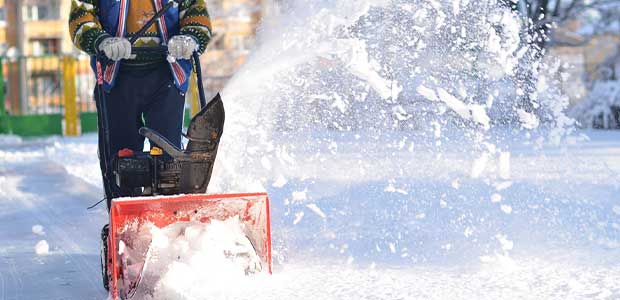
Snow Removal 101: 5 Tips to Safely Use Snow Blowers
Using a snow blower can reduce the amount of time spent removing snow, but employees and employers need to know how to safely operate the equipment.
- By Alex Saurman
- Feb 24, 2023
Some parts of the country this week are seeing large amounts of snowfall, with some areas getting two feet of snow.
With all this snow comes the need for snow removal, but this is not a job that comes without hazards, especially when using snow blowers.
This piece of equipment is incredibly helpful, but what’s the best way to stay safe and keep your employees safe when using snow blowers? Here are five tips.
Use PPE
Because using snow blowers can also lead to eye injuries, employees should wear eye protection when operating the equipment. If the noise level of the snow blower is exactly or more than 85 decibels A, hearing protection should also be used.
Shut Down Power When Servicing
If the snow blower becomes clogged or needs maintenance, be sure to power it off before doing anything to it. Failing to do so may result in injuries.
Fuel Up When it’s Turned Off
If an employee is about to use the snow blower, ensure that it’s off before adding fuel. If a refuel is required during use, the snow blower should be turned off before more fuel is added. As the American Academy of Orthopaedic Surgeons noted, snow blowers should never be fueled in an indoor setting.
Avoid Edges on Roofs
In 2019, a person in Wisconsin made the news when they were seen clearing a roof with a snow blower. Google the question “can you use a snow blower on a roof?” and you’ll see dozens of different responses, so let’s turn to OSHA. When operating a snow blower on a roof, the agency says to stay away from the edge, with some companies recommending at least a 15-foot distance.
Consider the Weather and Other Factors
Be aware that working in the cold can expose employees to cold-related illnesses. In addition to this, employees and employers need to account for factors like working alone, prior health conditions and time of day, all of which played a role in the death of a 60-year-old employee in 2018. Per a report, while using a snow blower at 3:45 a.m. in Massachusetts, the employee suffered a heart attack. The Massachusetts Fatality Assessment & Control Evaluation Program said the “below-freezing” temperature and overexertion also contributed to the employee’s death.
About the Author
Alex Saurman is a former Content Editor for Occupational Health & Safety,who has since joined OH&S’s client services team. She continues to work closely with OH&S’s editorial team and contributes to the magazine.